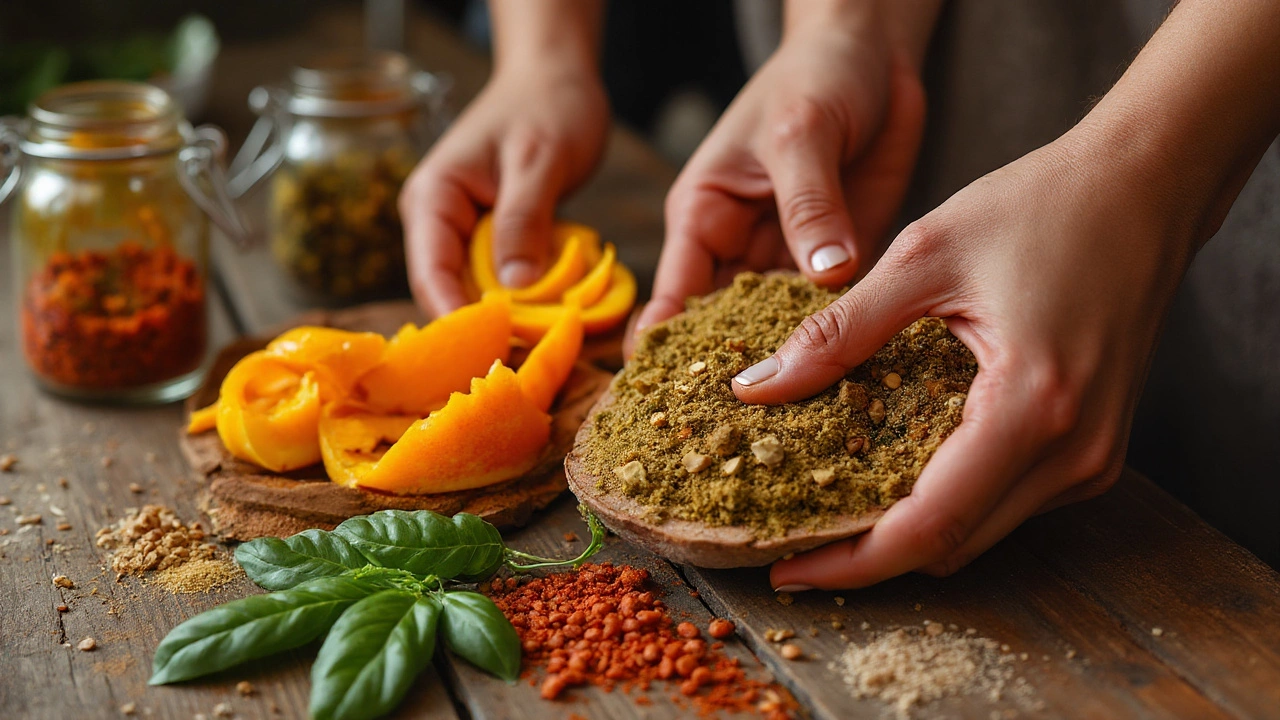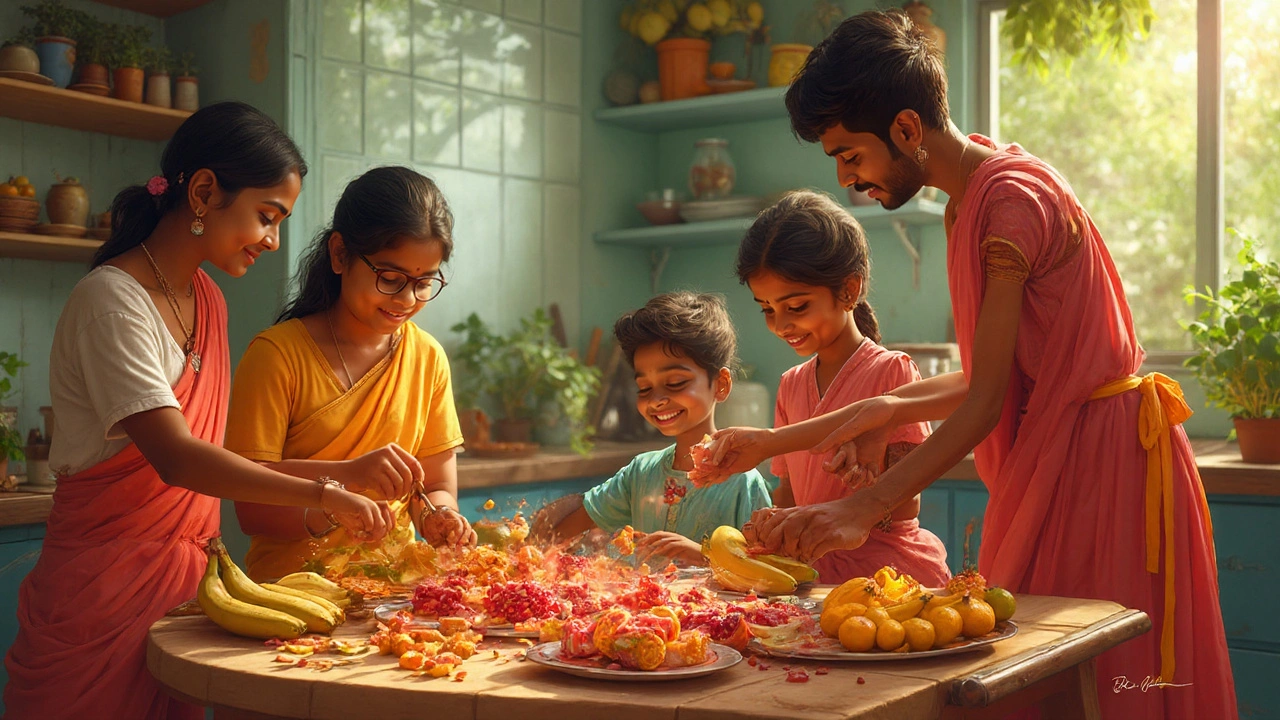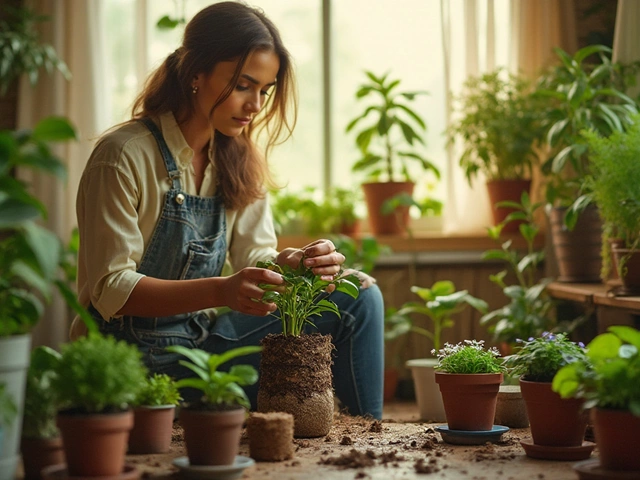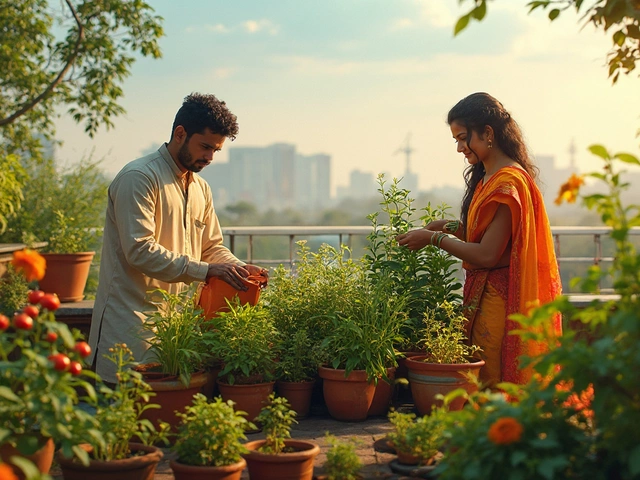No one likes tossing the best bits out. Grab an apple on your walk, bite in, and think about it: what area actually belongs in the bin? You might toss that little stem or maybe the seeds, but for most people, the entire thing is fair game. The idea that there’s fruit out there that leaves behind nothing—no waste, not even a little wrapper-like peel—might sound outrageous. But the truth is, you’ve probably had it many times without giving it a second thought. Some fruits truly live up to the “zero-waste” hype, while others can come close if you’re a bit clever about it. This isn’t just quirky trivia; with food waste turning into a growing problem worldwide, finding ways to make your next snack leave behind nothing can actually make a difference.
The Concept of Zero-Waste Fruits
Zero-waste fruit isn’t just a label—it’s a mindset. Try biting into a grape, for example. There’s no peel you feel the need to remove, the seeds can be consumed (unless you're a little fussy), and even the stem sometimes heads into the pot for jelly. That’s about as close to zero-waste as you’ll get in nature’s snack section. When you look at the numbers, New Zealand alone sends thousands of tonnes of food scraps to landfill every year. A chunk of that is fruit peels and cores, even though so much still could be used. Apples, pears, berries, and grapes are obvious winners; all edible, all the way through, unless you decide to go after the stickers the supermarket stuck on. But there’s a hidden detail: “waste” sometimes depends on culture. An avocado pit might be trash in Auckland but in some places, folks grind it up for recipes or even tea. Watermelon rinds become pickles in the South, and citrus peels show up in jams or cleaners. It’s not just about eating; it’s about rethinking what’s useful.
If you think about apples, for instance, the skin packs more fiber and antioxidants than the juicy inside, and tossing the core is a habit rather than a necessity. Sure, it’s a bit tough and packed with seeds, but nothing in it is harmful. A study from Massey University found apple peels host helpful bacteria, giving your gut a boost along with your snack. Berries like blueberries and raspberries are pop-in-your-mouth winners without cleanup—no skin, no seeds to mess with, nothing to scoop out. Grapes and their edible skins and seeds fit right in with this idea. The best part? The more of the fruit you eat, the more vitamins and minerals you get, often with bonus nutrients hiding in those “tossed” bits.
Culture keeps pushing us to peel, toss, and waste. Oranges, for example, get their peels torn away and thrown out. Yet, the zest is rich in flavor and the pith beneath (the white stuff) has more vitamin C per gram than the juicy segment. Even banana peels can be boiled or stir-fried (yep, for real), and they’re high in potassium and magnesium. More people in New Zealand have started using citrus peels in cleaning sprays, preserving zest for candy, or boiling it to make marmalade. The line between “waste” and “useful” changes as you get creative in the kitchen. Apples, pears, persimmons, figs—when eaten whole or cooked with the peels and cores—are easily the closest nature gives us to a genuine no-waste fruit.
Is there a true no-waste champion, or does it depend on how willing you are to experiment? Technically, berries (like blueberries and strawberries) win by default since you eat everything. But even the fiddly fruits can have a second life, depending on what you do with the leftovers. It’s a blend of bold taste buds and sneaky kitchen tricks.
Edible Fruits from Core to Peel: Champions of No-Waste
Some fruits don’t care about wearing a tough wrapper or stubborn pit. They offer up their whole selves to your hunger. Let’s get specific. First up: berries. Blueberries, raspberries, blackberries, and even humble gooseberries don’t leave anything for the compost bin. Their skin is soft, seeds tiny or unnoticeable, and the inside deliciously sweet or tart. These are the ones you toss in your mouth by the handful—it’s nearly impossible to create waste unless you’re dropping some on the kitchen floor.
Grapes are up next, especially the seedless varieties that are everywhere in New Zealand markets. These are a classic lunchbox filler because there’s no peeling, segmenting, or fussing. Even with seeds, grape seeds are edible and actually loaded with antioxidants, though that peppery crunch isn’t for everyone. Still, no part is truly inedible here. Some wineries even use grape seeds to extract oils, so they’re squeezing out value right to the very end. Every part of the grape—leaf, skin, and all—gets a use somewhere, whether it’s eating fresh, stuffing dolmades, or even brewing Georgian wine with the stems and seeds included for flavor.
But what about apples and pears? Most people don’t eat the core, but technically they’re edible, seeds and all (though you’d have to eat a mountain for any risk from the tiny bit of amygdalin in the seeds). The skin is where flavors and nutrients hang out, and when chopped for sauces, pies, or crumbles, there’s really no reason to leave a scrap. Even food producers squeeze juice from the pulp, and in some kitchens, people steam apple peels with cinnamon as a quick after-dinner sweet.
Then there are figs. From stem to base, you can chow down on every bite. The flower inside is edible, the skin is soft, and the seeds are so tiny you won’t even notice. Persimmons? Once fully ripe, the skin disappears into the flesh with a subtle chew. Kiwifruit is a fun one—most folks in Auckland scoop out the center and bin the fuzzy skin, but if you rub it to loosen the fuzz and wash it, the skin is not only edible but high in fiber and loaded with vitamin C. Texturally weird, maybe, but safe and nutritious!
Dive into passionfruit, too—the pulp, seeds, and everything go into juices and desserts. And if you’re bold, try fresh dates. Their skin and flesh go in one bite, leaving just a tiny pit. Easy to avoid piles of waste, especially compared to oranges or mangoes with thick peels and fibrous pits.
Here’s a trick: instead of tossing apple cores or skins, give them a second life. Toss them in a pot for homemade pectin, a natural thickener for jams. Or dry those peels in the oven and powder them—now you’ve got a tangy sprinkle for porridge or granola, loaded with nutrients that would have hit the bin. The sweet spot? Eating seasonally and locally, which boosts flavor and nutrition while reducing the urge to reach for waste-heavy imported produce. Fresh, whole fruit also skips over all that single-use packaging and plastic that comes from pre-cut or processed options at the supermarket.
While zero-waste fruits are real, it’s all about the choice you make—are you just snacking, or are you up for kitchen experiments? If you’re game, you might find there’s almost no fruit that can’t be enjoyed right down to the last sliver.

Creative Ways to Use Fruit Peels, Seeds, and "Waste"
Even fruits with tough skins or gnarly seeds can go way beyond the compost heap. With a little creativity, what most people throw out quickly becomes a kitchen star. Citrus peels top the list—usually tossed straight in the bin, but if you zest your oranges, lemons, or limes before juicing, that peel adds sunny flavor to cakes and curries. Dry any leftover citrus peels, grind them up, and you’ll have the most fragrant homemade cleaner on the block. Use them to flavor olive oil, infuse gin, or simmer in water for a natural air freshener. Nothing feels better than getting one more use before you finally compost.
Banana peels might seem like a weird place to start, but they’re actually edible after a quick boil or fry. They show up in vegan dishes like pulled “pork” sandwiches or stir-fries and pack extra potassium and fiber. In places like India and Brazil, banana peels are a traditional ingredient, not a novelty. You can even blend them into smoothies, though the taste needs a strong banana lover. If you're baking banana bread, drop a little grated banana peel into the batter—honestly, you probably won’t even notice in the flavor, but you’ll catch the nutrition boost.
Watermelon rinds—think about all those summer slices, ends hit the compost, right? Try pickling the rinds instead. Just slice off the tough outer green, cube the white part, and soak it in a vinegar brine with sugar and spice. The result? Crunchy, tangy watermelon pickles that go great on burgers or cheese platters. All over the southern United States, people have been doing this for generations, and the trend’s starting to catch on here in New Zealand among foodies and home preservers.
Pumpkin, squash, and melon seeds are easy wins, too. Rinse and roast them with a hit of salt and oil, and you’ve got a crunchy, high-protein snack better than anything in a packet. Same for papaya and cantaloupe—you might not find them bagged for lunch, but roasted with spice, they’re suddenly a star topping for salads.
Got apple or pear peels and cores? Steep them with a cinnamon stick or a star anise, and you’ll get an aromatic homemade tea. Stewing apple peels with sugar, lemon, and a splash of water gives a beautiful pink compote—perfect over yogurt or ice cream. Or, if homemade vinegar piques your curiosity, ferment those cores and peels with a bit of water and sugar for a tangy apple cider vinegar unique to your kitchen.
Here’s one for citrus lovers: candied orange, lemon, or grapefruit peels. Simmer strips in sugar syrup until they’re translucent, then dry and toss with a bit of sugar. The hit of sweet, zesty aroma in your home is unbeatable. Even pomegranate peels, which everyone chucks, can be boiled to make a deep red dye or infused for tea popular in some Middle Eastern cultures.
Kiwi skins, as mentioned, can go straight into the blender with a handful of green fruit—they’re a bit fuzzy and tart, but packed with fiber. If you’re not keen on the skin’s texture, dry and powder it for a zesty powder to sprinkle over your next smoothie bowl. Cherries or plums with stones? You won’t eat the pit, but those kernels, when cracked and roasted, are sometimes used to flavor liqueurs or jams in parts of Europe.
There’s a huge pay-off in double-duty fruit waste: fun flavor, cool texture, and less guilt about filling up the kitchen bin. Get creative—your rubbish might secretly be tomorrow’s superstar ingredient!
Smart Tips for a Zero-Waste Fruit Lifestyle
Want to chase down the dream of “zero-waste” fruit eating in everyday life? It’s a lot easier with a handful of handy habits and tricks. First, shop with the right mindset. Choose fresh, whole fruits—skip pre-packaged or pre-sliced options, which come with extra wrappers and sometimes aren’t as fresh. Head to farmers’ markets in Auckland or local orchards where you can pick your own—fruit here rarely has pesky plastic stickers or overzealous packaging.
Pick fruits you actually want to eat whole. Love a crunchy apple? Go for local varieties with thin, crisp skins. Grapes, berries, and figs are friendly for right-out-of-the-bag eating. Embrace “imperfect” fruits; funny shapes and small blemishes don’t affect the taste, and you’re keeping good food out of landfill.
At home, wash fruit thoroughly if you want to eat the skins. A little baking soda or vinegar in water rubs off pesticides, dirt, or waxy coatings common on apples, pears, and citrus. If you buy organic, even better—less risk of odd chemicals, more peace of mind when eating peels or skins.
Want to experiment with new uses? Keep a wide-mouthed tub in the fridge for peel scraps and odd bits through the week. When you’re in a food-saving mood, dump those into a pot to boil for fruit stock, jelly base, or flavoring for porridge or smoothies. Kids in Auckland schools have started “whole fruit” days—everyone gets fruit they can eat from end to end, like grapes or kiwifruit with skins on (after a good scrub, of course).
Don’t ignore the power of the freezer. Soft strawberries, blackberries, or squishy apple slices can become smoothie packs—just blend skins and all. Freeze citrus zest for baking later. Stash whole grapes for a frosty snack or natural ice cube replacer in summer drinks. The freezer is your friend when it comes to avoiding waste.
If you have backyard space or a patio, compost everything that truly can’t be eaten—seeds, hard pits, and the tough top of the pineapple. Even a small bin will cut your food waste heaps, and you’ll get free, rich soil for the next veggie garden or pot plant. If you’re in an apartment, many buildings around Auckland now have shareable compost bins or collection services run by local councils.
Finally, remember: “waste” is often just an ingredient waiting in disguise. Nearly every fruit offers something extra, whether it’s zest, juice, pectin, seeds for snacking, or even colorful peels for decoration or flavoring. Eating the whole fruit isn’t just about saving scraps—it’s about getting the full hit of flavor, fiber, nutrients, and satisfaction from what you buy. Next time you pick up an apple or bunch of grapes, give yourself a little challenge. How close can you get to *zero-waste*? The answer might just surprise you.





